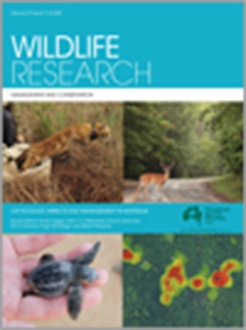Context. Accurate monitoring data on species presence and distribution are crucial for effective conservation management. Environmental DNA (eDNA)-based techniques, in which species are detected from trace amounts of DNA found throughout the environment, are promising tools that may complement traditional monitoring methods and improve detection. However, imperfect detection is a feature of all survey methods that should be properly assessed so that the probability of detecting a target species’ DNA at a site where it is present (i.e. the sensitivity of the method) can be determined. The spot-tailed quoll (Dasyurus maculatus), a carnivorous marsupial found in eastern Australia, is a difficult species to detect as it is rare and has large home ranges, often in remote and difficult to access habitat.
Aims. In this study, we aimed to evaluate the feasibility of using eDNA soil analysis as a viable alternative or complement to traditional monitoring techniques for detecting spot-tailed quoll.
Methods. We developed a species-specific assay and validated it using synthetic oligos, tissue samples and soil collected from a captive quoll enclosure. We then assessed the assay on natural environment soil samples taken from the Snowy River region from communal quoll defecation sites (latrines) and from broader quoll habitat. We used amplification success data to model the concentration of quoll DNA in soil from different site types and calculate the sensitivity of our assay.
Key results. Sensitivity was highest at latrine sites, but decreased sharply when sampling just 1 m away. In non-latrine habitat, the positive amplification rate was too low to allow for meaningful statistical analyses, suggesting that a prohibitively large number of samples would need to be analysed for detection probabilities to be adequate for routine monitoring programs.
Conclusions. Overall, we found that low sensitivity was driven by the low concentration of spot-tailed quoll DNA at many of the surveyed sites.
Implications. Given that quoll latrines can usually be identified from the accumulation of scats, and scats themselves can be sampled for DNA, we suggest that eDNA analysis of soil is unlikely to offer improvements over current spot-tailed quoll monitoring methods.






